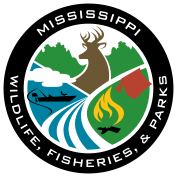
Written by: Chandler Strickland
Edited by: Pierce Young
Have you ever wondered where the turkeys on your property went during a certain time of year, and why they left?
For those that want to manage their property for wild turkeys, it is important to understand their life cycle and their needs throughout each season of the year. Wild turkeys will shift their home ranges throughout the landscape depending on the changes in their needs, and will often use areas with vastly different vegetation types depending on what those needs are.
During Fall, wild turkeys will start forming flocks that are usually segregated by sex and age classes. These flocks will start moving to their wintering areas, sometimes traveling several miles in search of mature open bottomland hardwood forests that provide both hard and soft mast, and bugs underneath the leaf litter. These large flocks may also be found in harvested crop fields during the Winter months if they are available in search of crop waste.
Following Winter, wild turkeys will transition into the breeding season once Spring begins. Flocks will begin to break up and male turkeys will begin to become territorial. Turkeys will move to areas with more abundant food resources, such as open spaces and managed timber stands, especially lush vegetation areas that attract bugs. Gobblers will seek these open areas where they can more easily be seen and display for courtship and breeding opportunities. As Spring continues, hens will start nesting and search for areas with denser vegetation, such as cutovers, fallow areas, and timber stands with thick vegetation in the understory. Managed pine stands and native grass fields, shaped by thinning and prescribed fire, will provide resources essential for both hens and gobblers.
Early in Summer, broods will begin to hatch, and hens will seek out habitat with low growing vegetation mixed with bare ground such as native fields and managed timber stands for her poults to be able to navigate more easily. These areas with "umbrella type" vegetation will offer ample cover for poults, along with food resources like insects and soft mast, while allowing the hen to keep a close watch for potential threats. These vegetation types will be extremely important for young broods until they develop their primary feathers for flight, about 2 weeks after hatching. If these areas are closer to the covered vegetation of the nest, poult survival will be greatest during these daily trips. Later into Summer, other groups of hens and broods will group together and shift to different open vegetated areas as food resources shift. During this time, gobblers have no role in brood rearing and will use mature timber stands and open fields, shifting their movement according to food resources throughout Summer months.
Wild turkey management relies entirely upon the different areas of their habitat during life cycles changes. Take the time to study these habits to help diversify and enhance your property for wild turkeys.
For more information on how to manage for wild turkeys visit our website at
www.mdwfp.com/wildlife-management-info
To meet with a wildlife biologist to help plan wild turkey habitat on your property visit us at